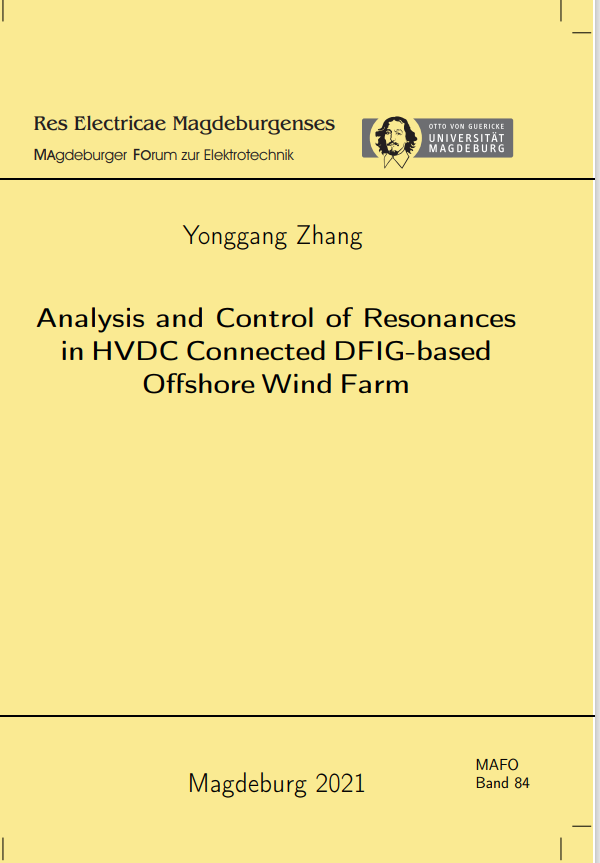Analysis and control of resonances in HVDC connected DFIG-based offshore wind farm
DOI:
https://doi.org/10.24352/UB.OVGU-2021-062Keywords:
Elektrische EnergieübertragungAbstract
Interactions among the widely utilised converter-interfaced grid components and passive grid components can introduce wide-frequency range of resonances, thus induce massive harmonic distortions and even endanger system stability. Their consequences might be the tripping of renewable and conventional generation units or the physical damage of sensitive grid assets. Motivated by recent years’ resonance incidents in wind-integrated power systems, this study investigates the resonance-induced harmonic distortion and stability issues in doubly fed induction generator (DFIG)-based offshore wind farm (OWF) with high-voltage direct current (HVDC) grid connection. The objective of this study is to accurately characterize the resonances, evaluate their risks and provide solutions for the design of mitigation strategy. To accurately capture the dynamic characteristics of DFIG-based wind farm, a comprehensive impedance modelling considering the detailed PI control loop and DC dynamics of wind turbine as well as the cable connections of the medium-voltage (MV) collector system is conducted. Through stepwise simulation verifications, aggregated modelling of MV collector system is proved to be suitable for wideband resonance analysis. On this basis, both Bode-plot method and resonance mode analysis (RMA) approach have been adopted to address the resonance issues taking into account various wind farm operating conditions and grid topology changes. Their impacts on resonance frequency, harmonic amplification level and damping level are investigated. The locations where resonances can be most easily excited are identified through bus participation factor analysis. Moreover, the impact of the frequency-coupling effects from asymmetrial converter control and switching operations on subsynchronous resonance (SSR), middleand high-frequency resonances is analyzed using the aggregated models derived from a practical HVDC connected DFIG-based OWF. Large harmonic distortion and stability issues are demonstrated for the frequency range from several Hz to a few kHz. In order to prevent the negative impact of resonances on power quality and system stability, a series of active damping possibilites have been studied and implemented in the studied wind-integrated power system, and a coordinated damping strategy which can effectively damp wideband resonances is proposed. Finally, simulations in MATLAB/Simulink validate the results of impedance modelling, resonance analysis as well as the effectiveness of the wideband resonance damping strategy.
Downloads
Published
Issue
Section
License
Copyright (c) 2021 Res Electricae Magdeburgenses. Magdeburger Forum zur Elektrotechnik

This work is licensed under a Creative Commons Attribution-ShareAlike 4.0 International License.

